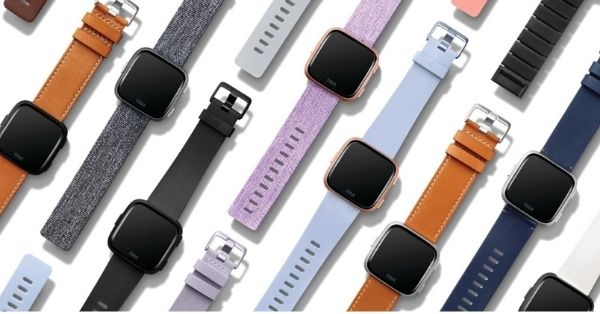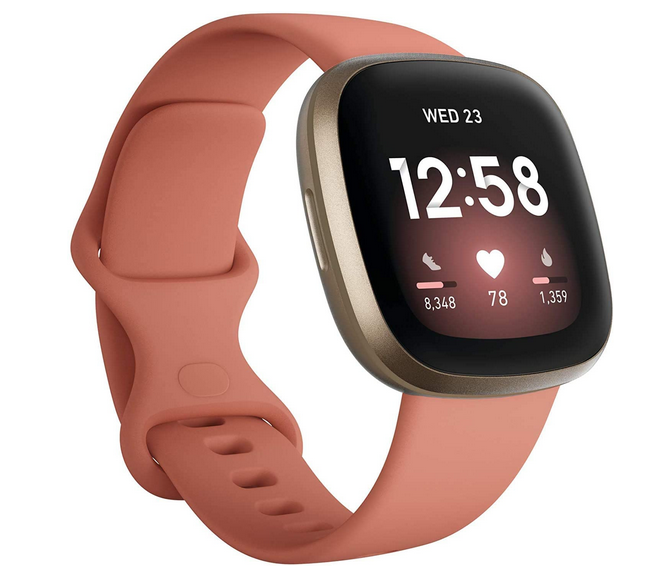When it comes to fitness trackers, there are tons of options available. From smartwatches to activity bands, each has its own unique features and benefits. Since you want a good fitness tracker, you need to know how to select a fitness tracker that is right for you and your specific fitness needs. You may be wanting to know which one should you buy. Or, you really have no clue where to start.
In this blog post, we’ll go through all the different types of fitness tracker options available today and explain why each type works best for certain individuals depending on if you are wanting to just track overall fitness, or if you are running marathons, or are a hiking enthusiast.

What is a Fitness Tracker?
A fitness tracker is simply a device that tracks your physical activities throughout the day. They come in many shapes and sizes, from wristbands to watches to necklaces. Some track steps, others calories burned, and still others monitor heart rate.
Wristbands and watches are typically worn around the wrist, whereas necklaces are worn around the throat. There are also activity bands that fit on any part of the body like a heart rate monitor or combined with a very accurate heart rate monitor.
Regardless of what kind of fitness tracker you choose, they all work by tracking your movements throughout the day. These data points are then sent to your smartphone or computer or a specific app, so that you can see your progress at a glance.
Why do people use fitness trackers?
Fitness trackers are becoming increasingly popular because they help motivate people to exercise and keep up with their daily activities. They also provide a convenient way to monitor progress towards goals. Many people use fitness trackers to lose weight, improve their health, or simply stay fit. Some people use them to compete against others in races, while others use them to track their sleep patterns. While many fitness trackers are designed to work with smartphones, there are also standalone devices that can be worn on the wrist. These include watches, activity bands, and smartwatches with more bells and whistles that are incorporated into the fitness tracking aspect of the device.
How To Select a Fitness Tracker Specific To Your Needs

Fitness trackers come in many shapes and sizes. There are fitness trackers designed specifically for runners, hikers, cyclists, swimmers, and others. Some are made for general fitness tracking, while others are made for specific activities like monitoring your heart rate and stress activities through skin response.
Wristband fitness trackers are generally considered to be the most affordable option. However, they are also the least accurate. If you’re looking for something simple and inexpensive, then a band might be the perfect choice for you.
Activity trackers are typically more expensive than wristbands because they include sensors that measure heart rate, breathing, and other biometric data. Activity trackers are often paired with apps that allow users to monitor their progress and set goals. Fitbit has a wide range of activity trackers with these features and are considered one of the top brands with a great app that can be paired with all of their devices.
Smartphones are becoming increasingly popular as fitness trackers. Smartphone fitness trackers are similar to activity trackers, except they don’t require any additional hardware. Instead, they rely on built-in sensors to collect information about your daily movements. Some smartphone fitness trackers are standalone units that sync with an app on your phone. Others come preloaded with an app that allows you to view your stats and set goals.
Now another type of Fitness tracker is also available from Fitbit and that is Fitness Trackers for kids. Fitbit Ace3 Vs Garmin Vivofit Jr 3 is a prime example of the two best Fitness trackers for kids.
Determine Your “Why” First

The first step for choosing a fitness tracker is to determine your “why”. You want to consider what you plan on using it for. If you are looking to track your overall fitness, then you might want to look into a basic fitness tracker. These trackers usually include things like steps taken, calories burned, distance traveled, and heart rate.
If you are looking to track something else, then you might want a fitness tracker that tracks swimming, biking, running, or hiking. Or you may find it important to monitor you heart rate, sleep, or even your menstrual cycle.
You also want to think about whether you want a fitness tracker that is waterproof or not. If you plan on taking your fitness tracker outdoors, then you definitely want a water resistant fitness tracker, or if you simply want to not have to take it off, or if you plan on using swimming as a part of your fitness routine.
Overall Health Vs. loosing weight or Hardcore Training
The second step in how to select a fitness tracker is whether you are simple tracking your overall health and fitness, trying to lose weight or you are involved in hardcore training. Like you are training to run in a marathon or are training to go on a major hiking event. There are also fitness trackers that are designed specifically for running. Garmin, for example, specializes in fitness trackers specifically designed for the serious runner and outdoor enthusiast. If this is the case, I would recommend looking at some of their devices and do your due diligence with some research.
How to Select the Right Features in a Fitness Tracker
Fitness trackers are an easy way to keep tabs on your fitness goals. Once you have determined the type of metrics that you want to monitor, they can certainly help you accomplish things like lose weight, gain weight, maintain your overall fitness.
They can also be used to monitor your sleep patterns, heart rate, calories burned, and much more. But how do you know which features are worth adding to your tracker? Here’s a quick guide to selecting the right ones.
STEP 1: Choose a Tracker That Fits Your Needs
There are plenty of different types of fitness trackers available today. Some are designed to measure only certain aspects of your health, while others are capable of tracking everything from steps taken to calories burned. It all depends on what you want to accomplish with your tracker.
STEP 2: Find the Best Fit For Your Budget
When choosing a fitness tracker, you’ll need to consider both its size and price. Smaller devices tend to be cheaper, but larger models often come with additional features. In general, the smaller the device, the lower the price. However, some of the most popular fitness trackers are actually quite large.
STEP 3: Consider What Features Are Most Important to You
Once you’ve narrowed down your options based on size and price, you’ll need to decide what features you really need. There are several things to think about here.
- First, does your goal require a high level of accuracy? If so, then you’ll probably want a GPS-enabled model.
- Second, do you need to track multiple activities simultaneously? If so, then look for a multi-sport tracker.
- Third, do you need to monitor your sleep? If so, then a smart watch might be the way to go. Fourth, do you need to receive notifications? If so, then choose a tracker with Bluetooth connectivity. Finally,
- how important is battery life? If you plan on using your tracker every day, then you’ll want something with a long battery life.
STEP 4: Compare Different Models Based On Their Features
After narrowing down your choices based on budget and needs, it’s time to compare them based on their features. The best fitness trackers will offer many of these features. When you visit Amazon.com or a manufactures website, they will most certainly detail the features and benefits of each of their devices.
Another way is to review buying guides from blogs and websites that write about Fitness Devices, such as the one you are reading now. We have several different buying guides based on your needs. Simply go to buying guides here for a quick review.
Each of these buying guides will go into great detail of each fitness devices so that you can get enough information to make a good buying decision.
Do You Really Want A Smartwatch Instead?

Originally, Smartwatches were not known for having good fitness tracking capabilities. They were great for the features you would expect from a smartwatch such as, built-in GPS, music playback, phone calls, emailing, etc., however, fitness was not one of those functions.
That has changed in recent years though. With the release of Apple Watch Series 2, we saw a major improvement in fitness tracking capability. This allowed Apple Watch to become a viable option for people who wanted a fitness tracker as well as a smartwatch.
Now there are many so called “Hybrids” of a Smartwatch with Fitness Tracking available.
The disadvantage of these types of devices, is that they are typically big and bulky. This might not be a problem for you, but it may be a problem for someone who has a small wrist and is primarily interested in overall health and fitness. You basically need to take a good hard look at these devices to see if you can get the best of both worlds.
If this is the case, then I suggest looking at some of the smaller models that are out there. Some of the more popular ones include the Fitbit Versa 3, Garmin Vivoactive 3, and the Fitbit Sense.
These are all very affordable options, and have excellent fitness tracking capabilities. Check out our latest guide detailing these three smartwatches with fitness tracking.
What Is Your Budget Range?
When shopping around for a fitness tracker, keep in mind that price range. There are plenty of cheap fitness trackers out there, but they usually lack some key features. For example, they don’t always have heart rate monitoring, water resistance, or GPS.
You also need to consider how often you intend to use the device. Do you only want to wear it once or twice per week? Or do you plan on wearing it every day? If you’re going to be using it daily, then you’ll probably want something that lasts longer than a few days.
You should also think about what type of activity you plan on doing while wearing the device. Are you going to be running, walking, hiking, swimming, biking, or just generally moving around? All of these things factor into what kind of fitness tracker you choose.
How Much Time Will You Spend Using It?
This is another important consideration when choosing a smartwatch with a fitness tracker. Most of them will last anywhere from 3 months up to 1 year. The reason why they say this is because most of them are designed to track your steps, calories burned, distance traveled, and other general metrics.
This means that if you aren’t planning on using the watch everyday, then you won’t really benefit much from it. However, if you plan on using it everyday, then you’ll definitely notice an increase in performance over time.
Final Thoughts On How To Select a Fitness Tracker
When it comes to selecting a fitness tracker, there are several factors to consider. Some people prefer activity trackers while others prefer smart watches. Others still prefer dedicated devices. The first step is to determine what type of device you want. Do you want an activity tracker or a smart watch? There are pros and cons to each option. There are plenty of options available for both types of devices. So, you may need to try them out to see which one works best for you. For example, activity trackers tend to be less expensive than smartwatches but they lack many of the features found on smartwatches. Smartwatches offer a wider range of functions than activity trackers but they’re typically more expensive. There are plenty of options available for both types of devices. So, you may need to try them out to see which one works best for you.
In this article, I covered how to select a fitness tracker and why you should consider getting one. I also discussed what to think about when selecting a fitness tracker.
I hope this helps you out! Please let me know if you have any questions or comments below.